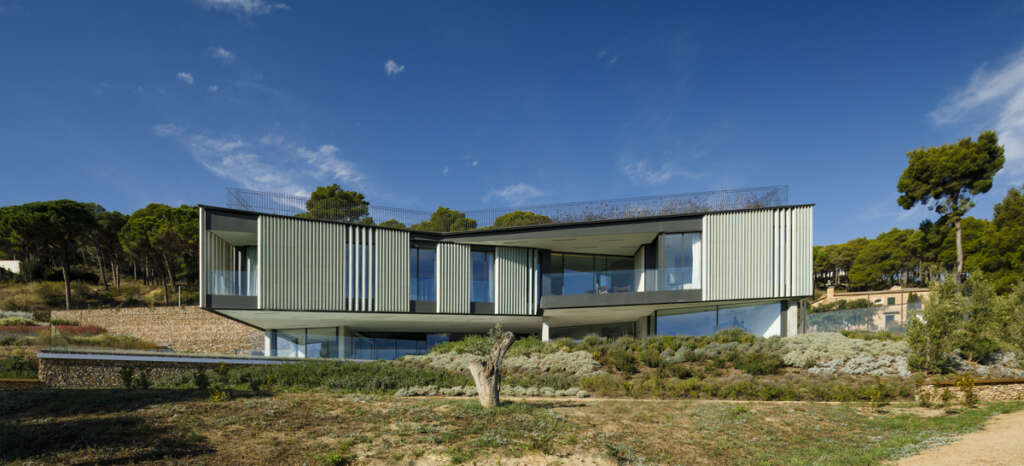
Happy House
Architect: SALA FERUSIC Architects
Location: Girona, Spain
Type: House
Year: 2022
Photographs: Marcela Grassi
The following description is courtesy of the architects. The Happy House is a private house that sits on the slope of Aiguablava, in Begur (Girona – Spain), overlooking the natural cove. The principles for its design are based on sustainability and respect to its immediate environment, from its integration into the terrain and the landscape to its energy efficiency and low carbon footprint.
The building does not exceed in height the street level and merges its volume with the landscape. A rooftop garden welcomes and serves as a panoramic promenade that gently guides down to the house’s entrance, while embracing a patio in its core.
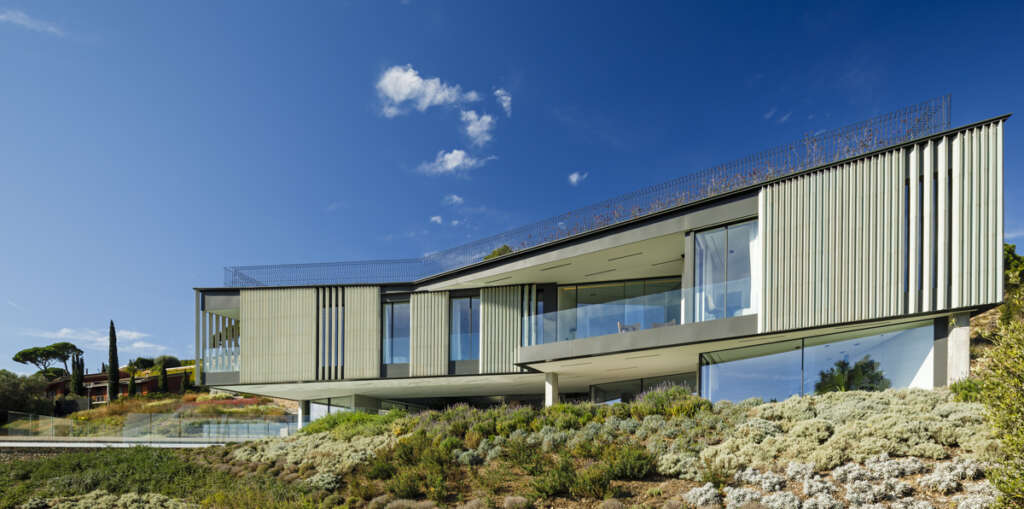
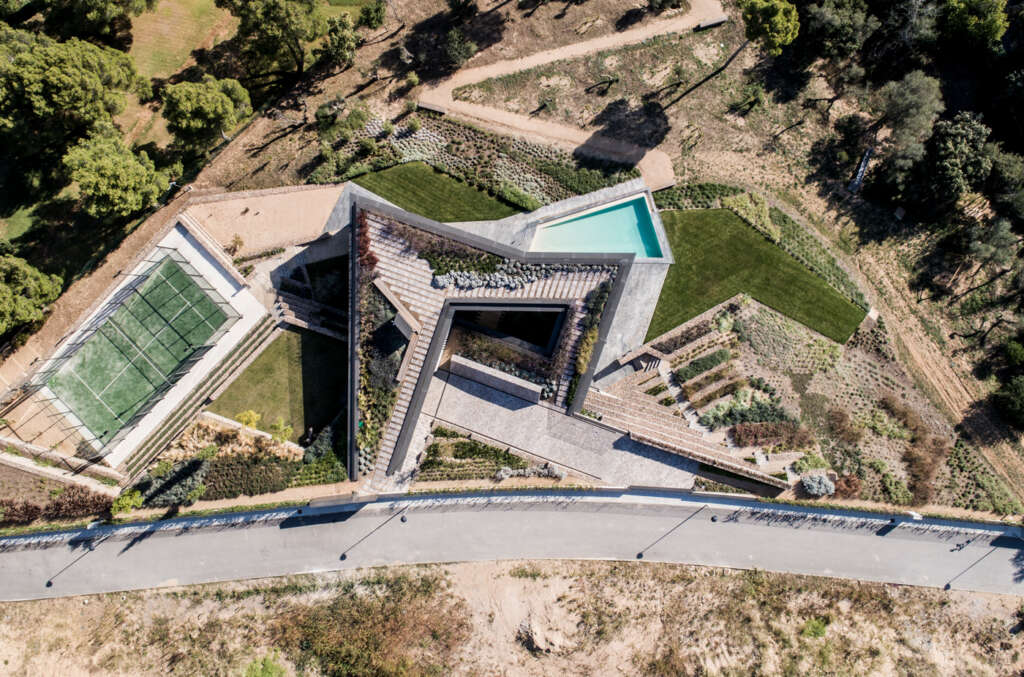
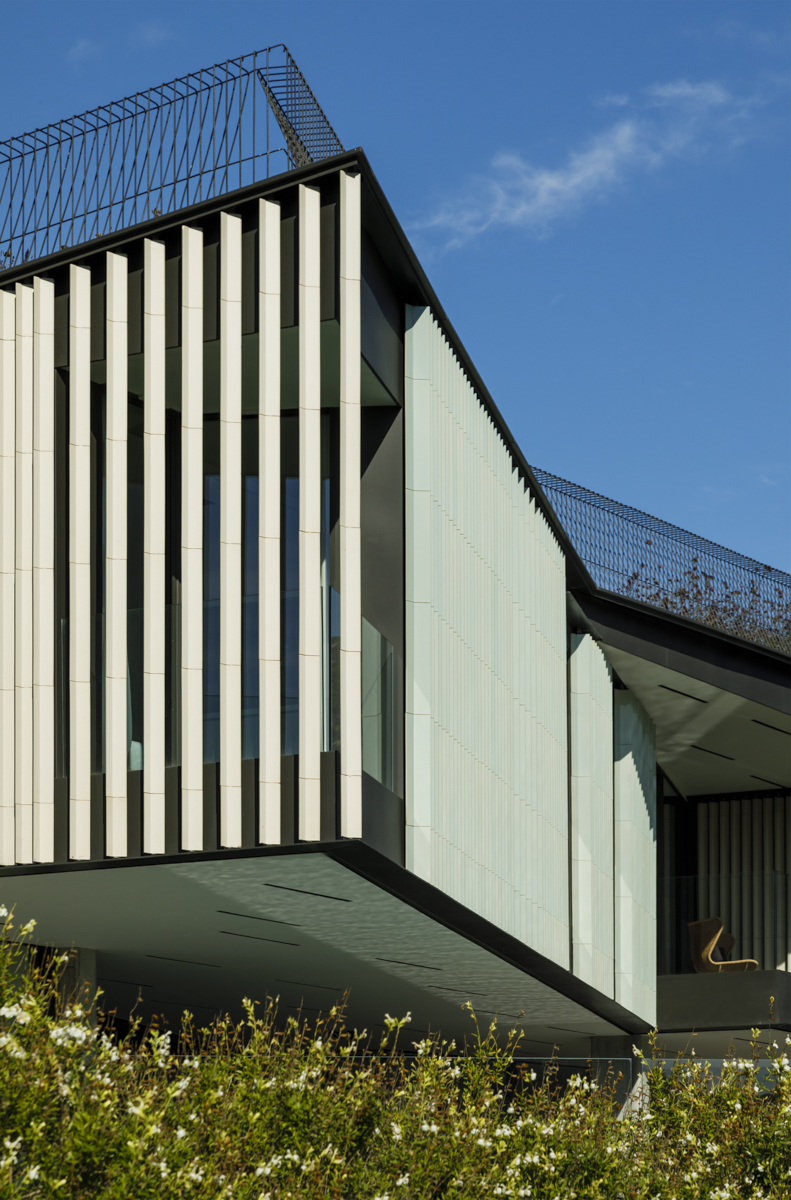
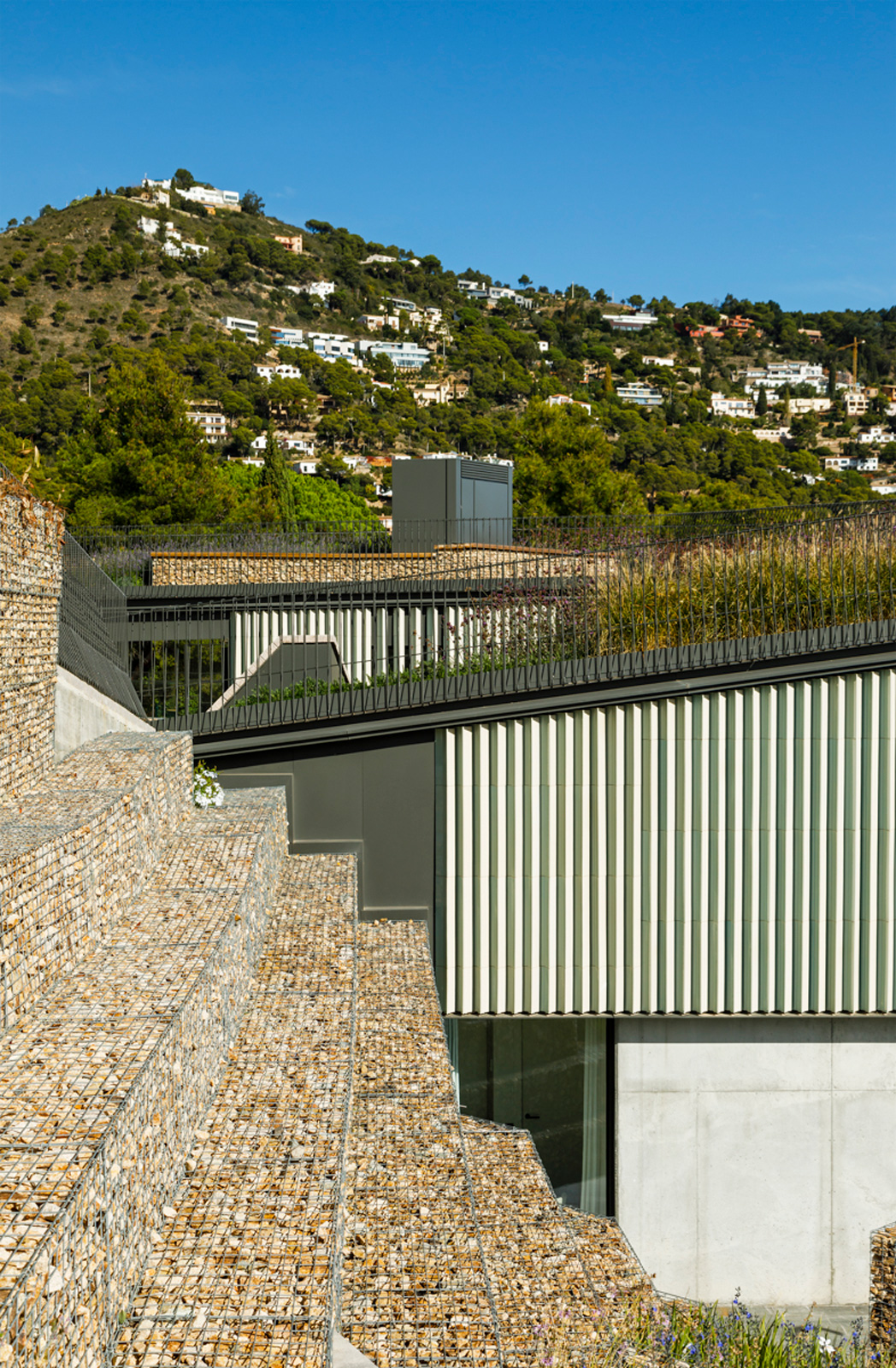
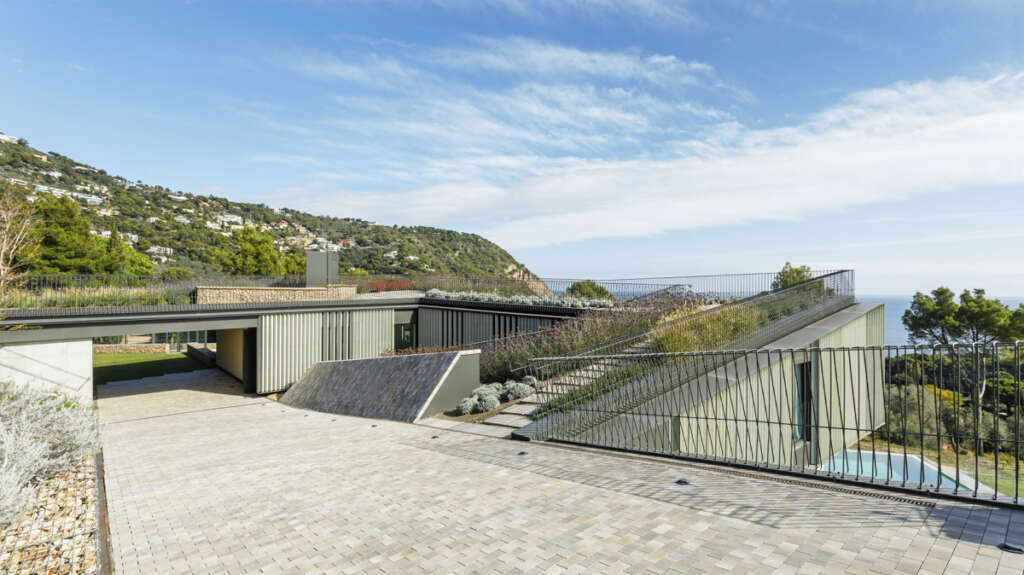
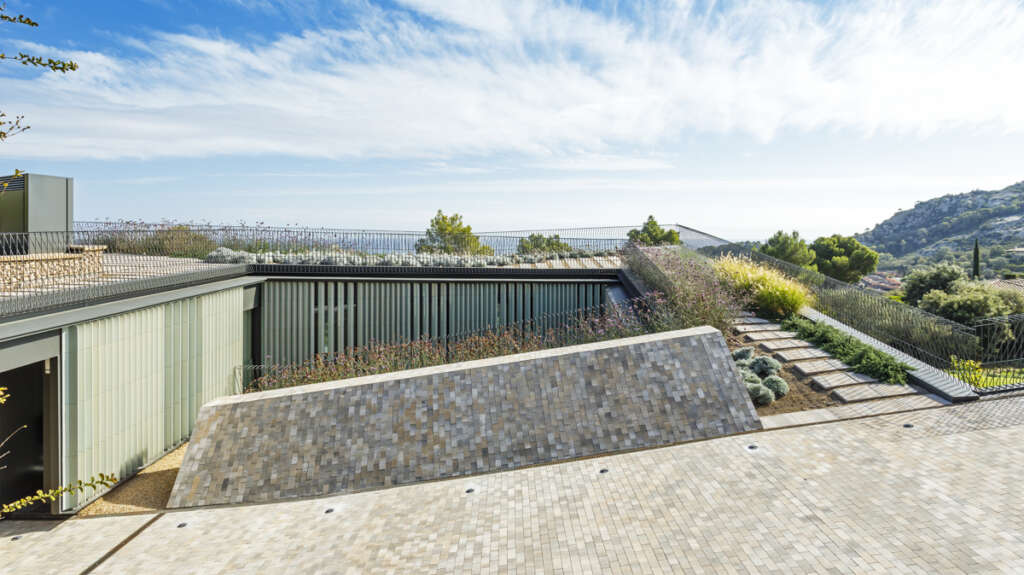
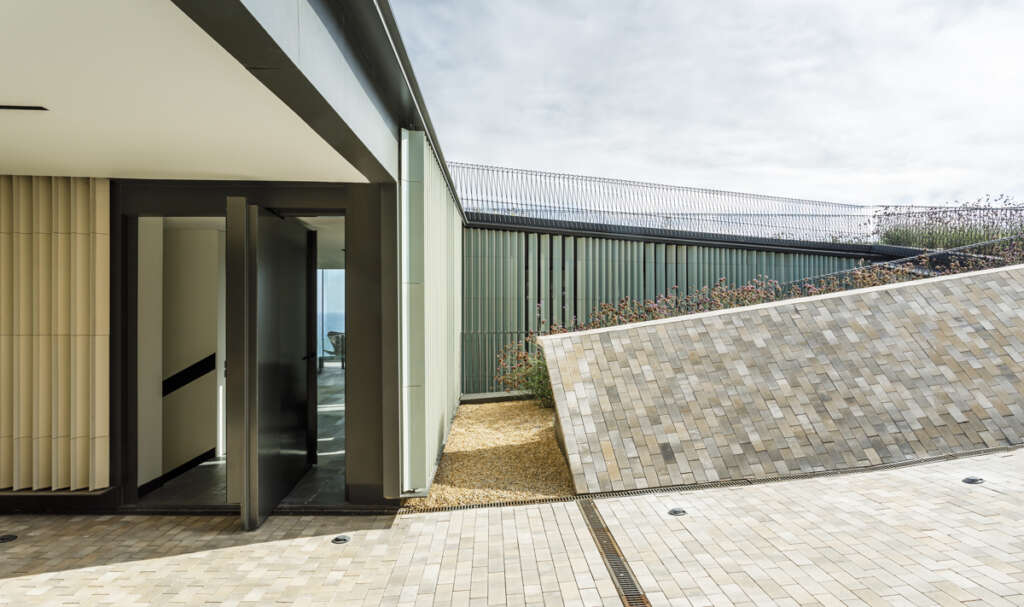
The different levels are organized by a playful sequence of variable sections that combines and contrasts the character of the two storeys. The access is located on the first floor, which leads to a glazed hall that overlooks Aiguablava, and from which a staircase descends through a double space to the ground floor.
On the one hand, the ground floor accommodates the daytime programme, and it is partially underground, combining the massiveness and the tectonics of a system of concrete walls and pillars with the transparency of the great, light and glazed carpentry. This is how the building frames the picturesque views over the cove, as well as it pursues the continuity with the terrain, the landscape and the terrace, which is covered by the flight of the upper floor. While its encounter with the terrain tempers the house due to the effect of the thermal mass, the cantilever over the terrace prevents the glass from the direct incidence of the sunlight, so as to offer comfort and efficiency to the interior climate. The programme spins around a central patio, which allows the sun to enter after midday and triggers the natural ventilation of the house as a result of the chimney effect.
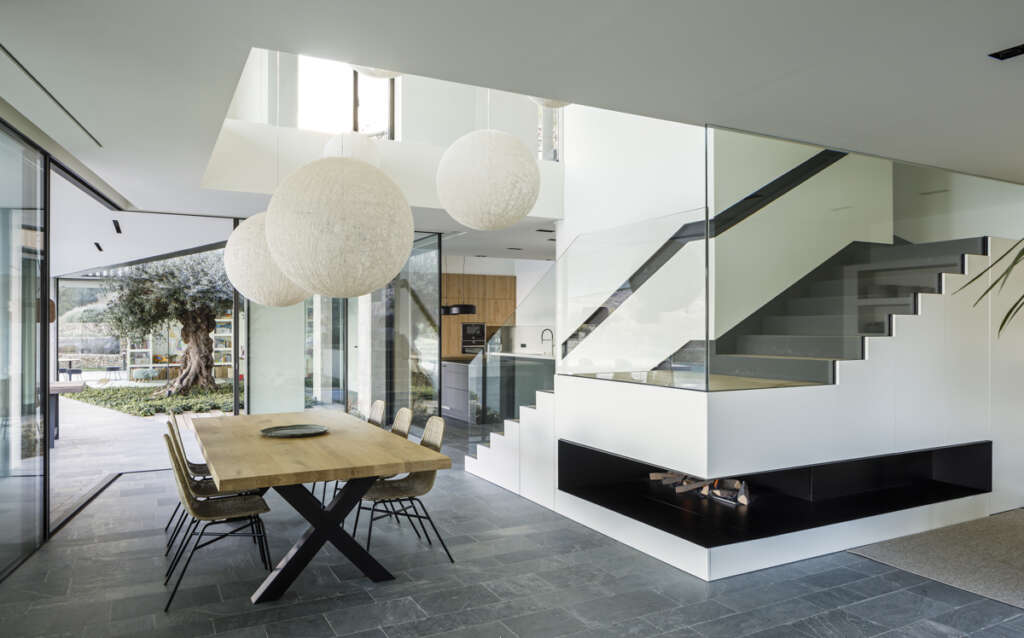
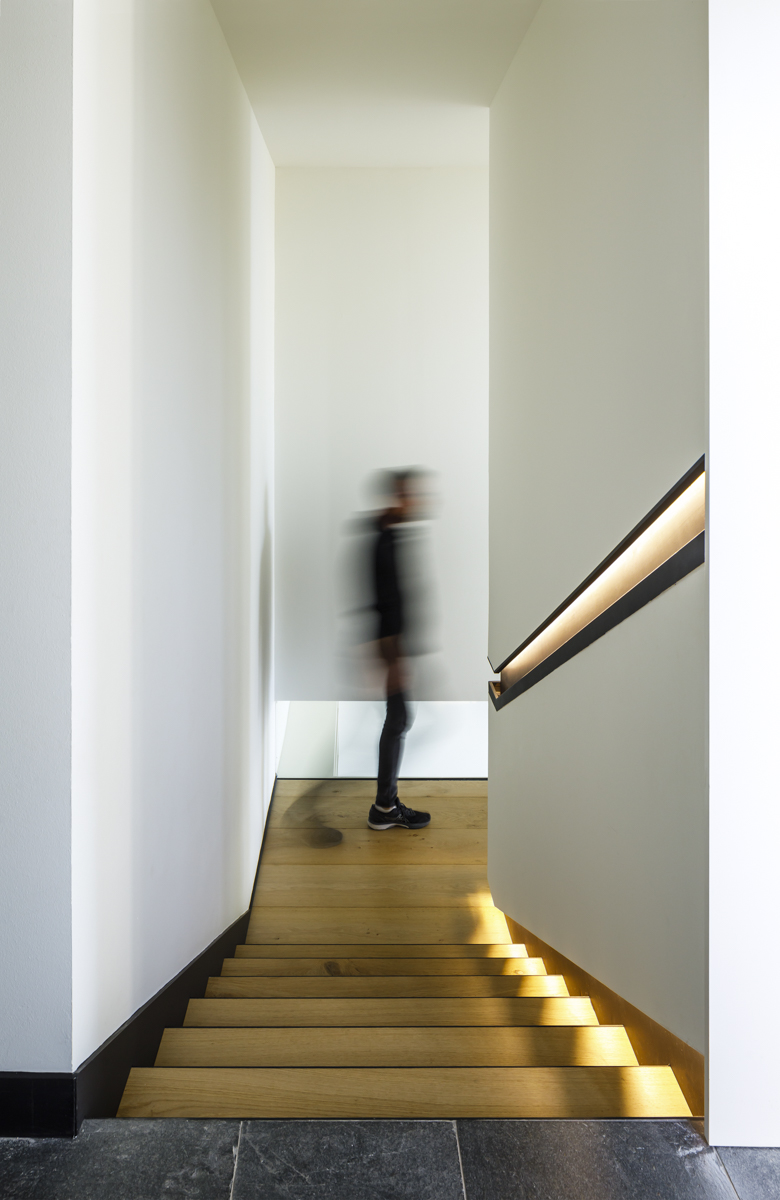
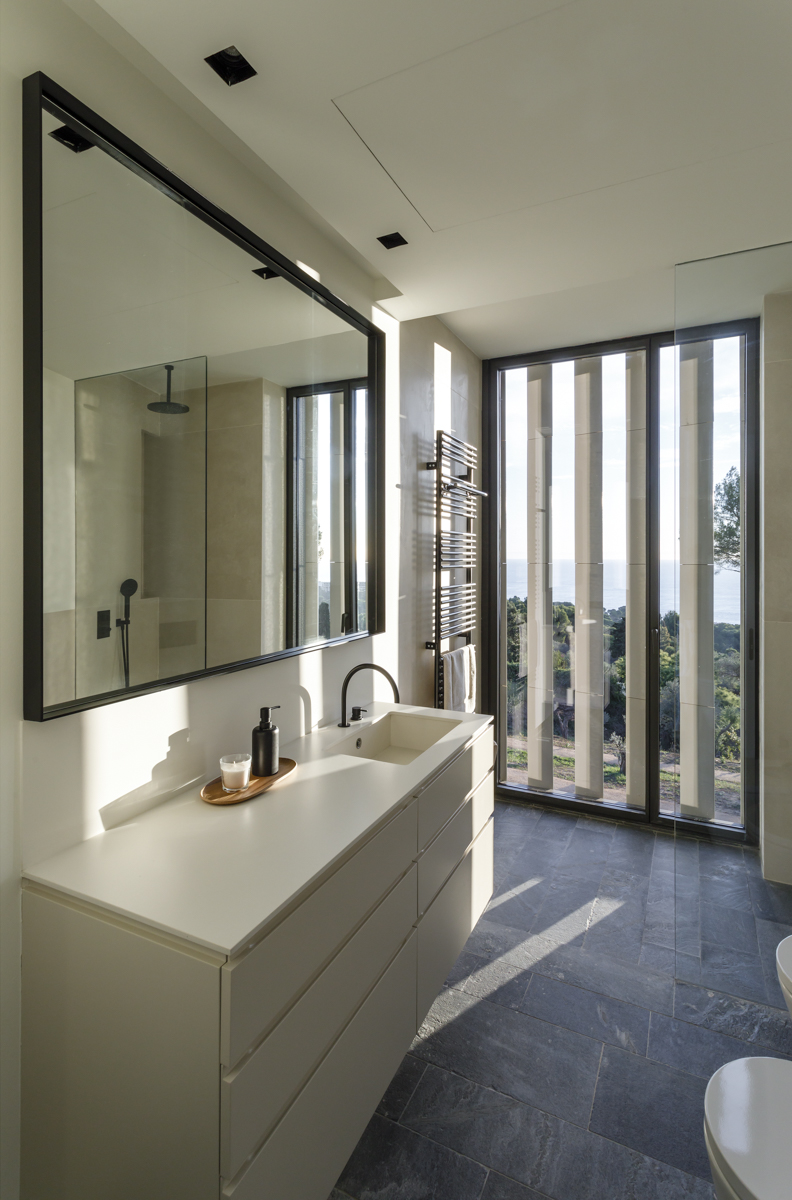
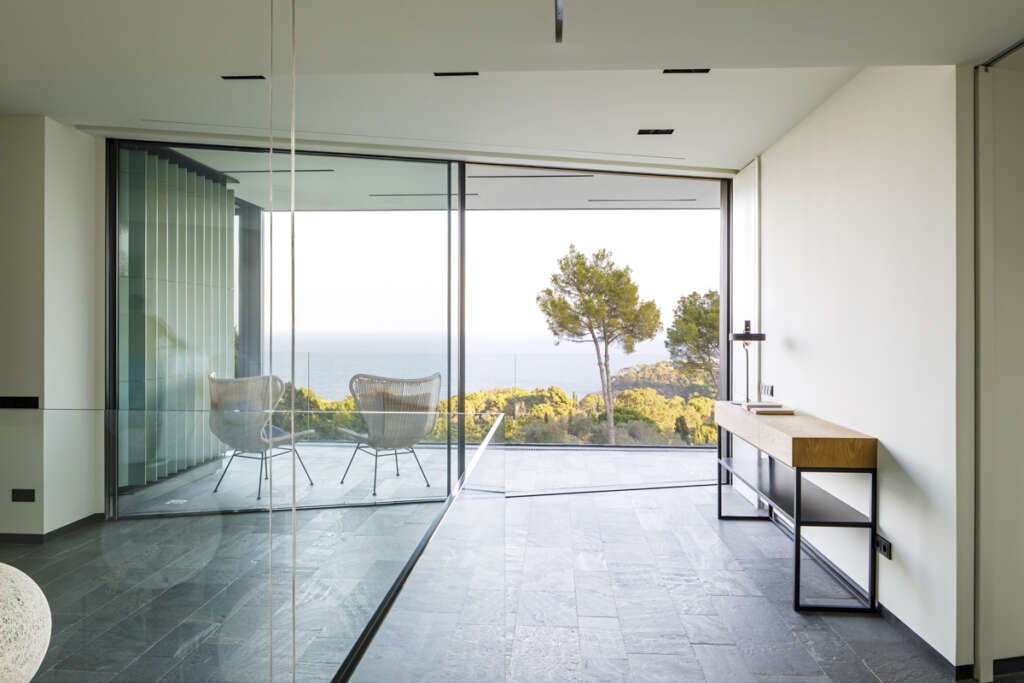
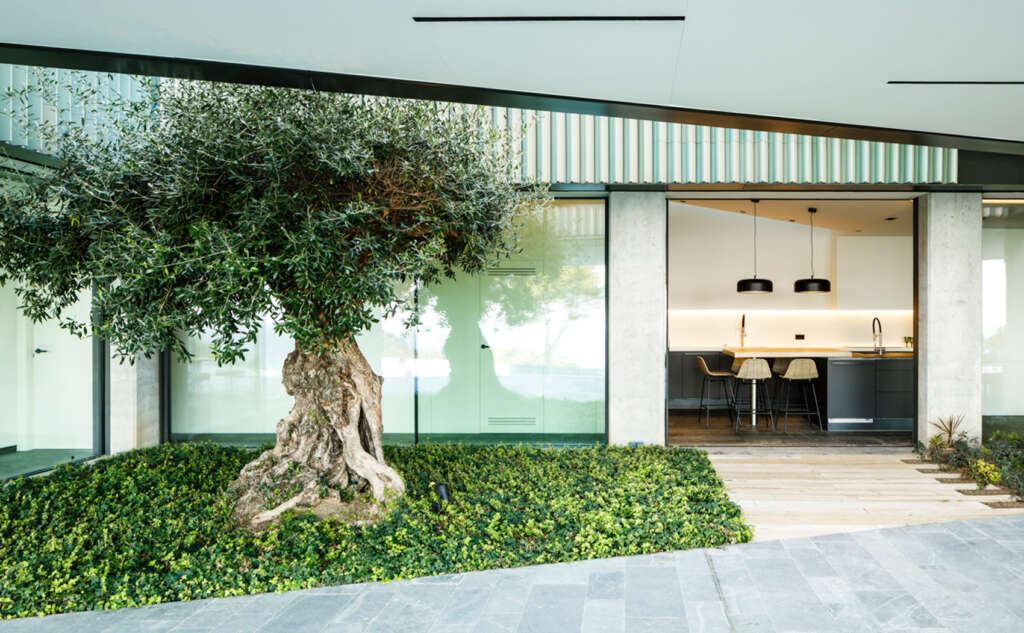
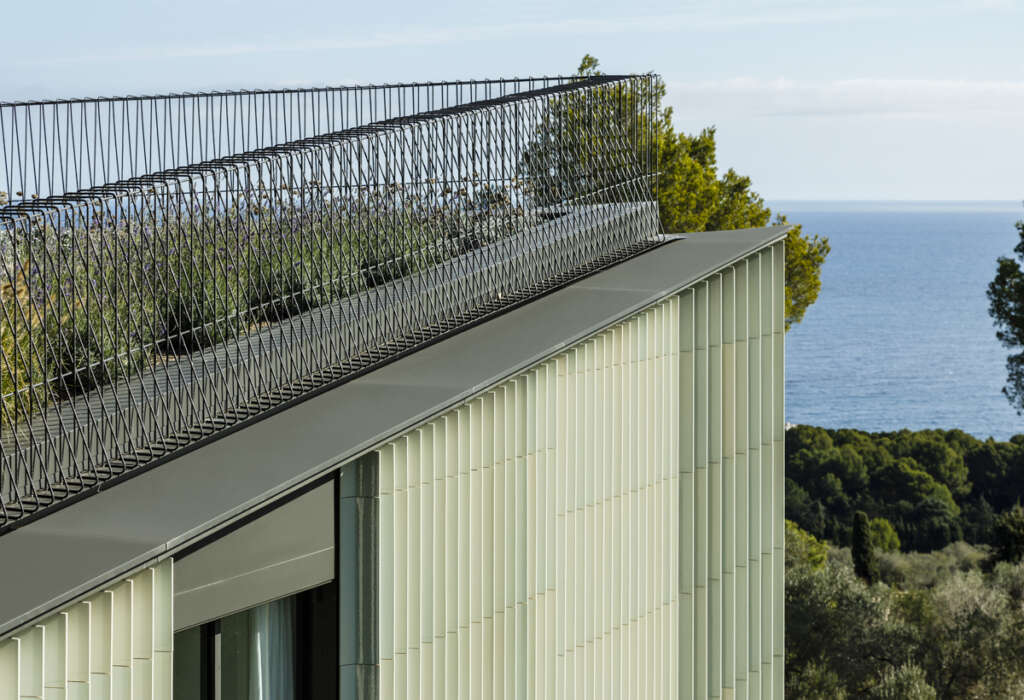
On the other hand, a light steel structure rests on the ground floor’s massive concrete structure. A system of bridge-like steel trusses fly over the terrace and raises the first floor, which accommodates the night programme. While the lower floor blurs the boundary between the inside and the outside, the upper floor requires of intimacy, and therefore it has been cladded with a permeable ceramic skin. A piece designed along with Ceràmica Cumella is unfolded as the last layer of the ventilated façade at different rhythms, which allows the interior chamber to ventilate while it varies the gradient of light and views that reach the rooms. The dual character of these components allows the perception of either the matt and natural color of the ceramic or a soft turquoise color of its glaze, according to the direction in which one may look at the building. That is, either the natural color of the earth, or the color of the sea, the sky and the surrounding environment. On top of it, a green roof isolates and tempers its interior in a kind and natural manner.
The architectural design for Happy House Begur pursues the formal and constructive coherence of this single-family house in favour of the efficiency, the sustainability, the responsibility with the surrounding, as well as the integration within the landscape, in an environment as sensible as the cove of Aiguablava.
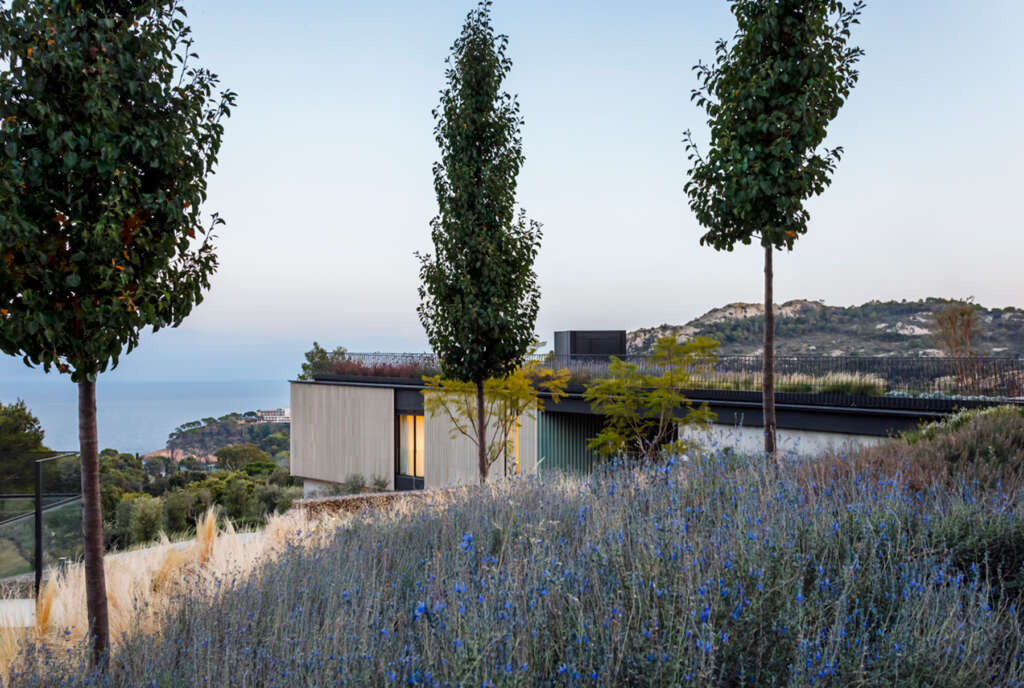
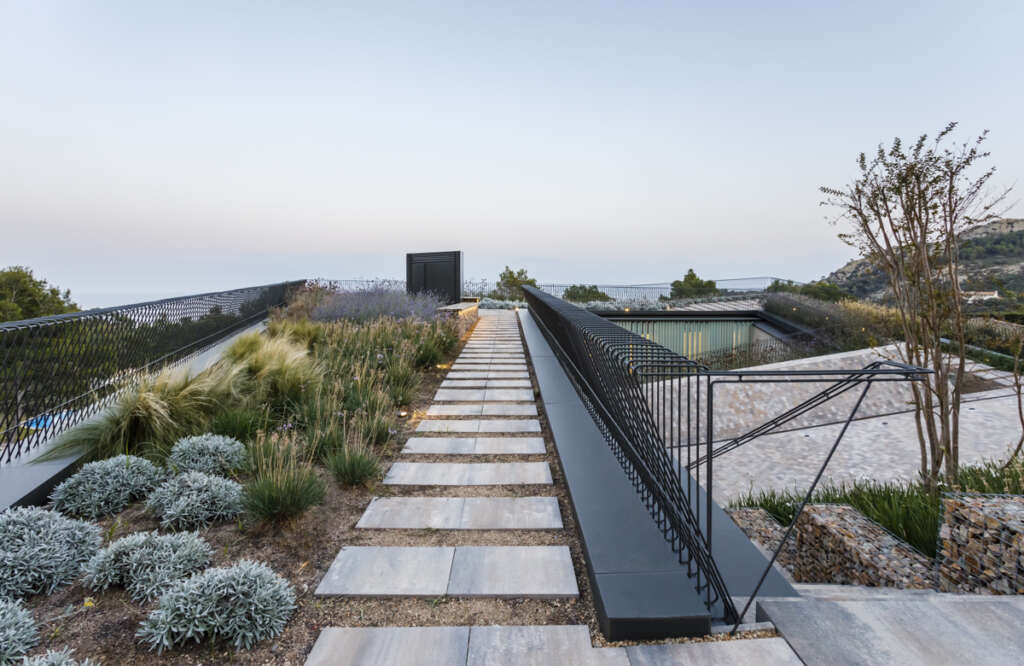
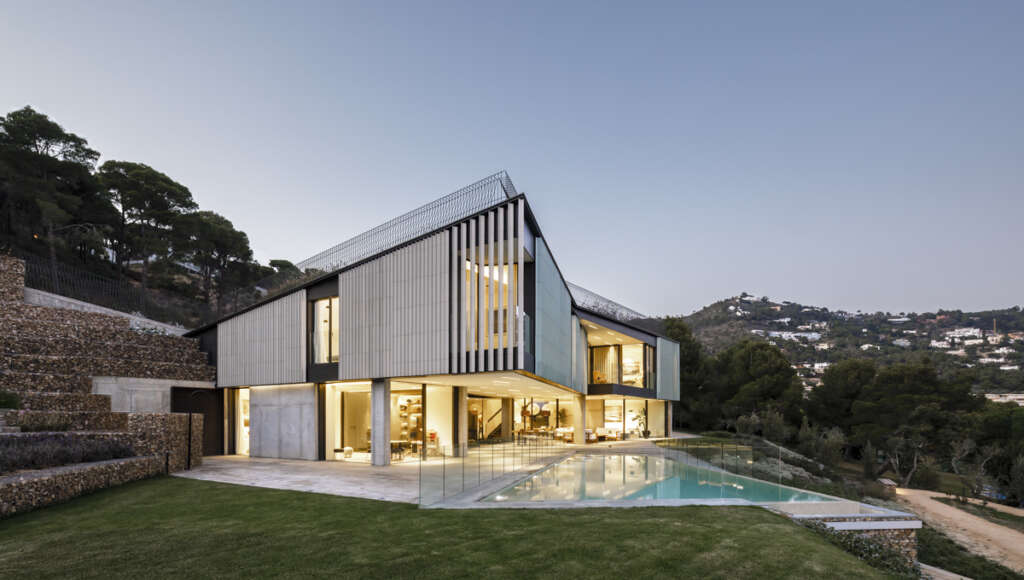
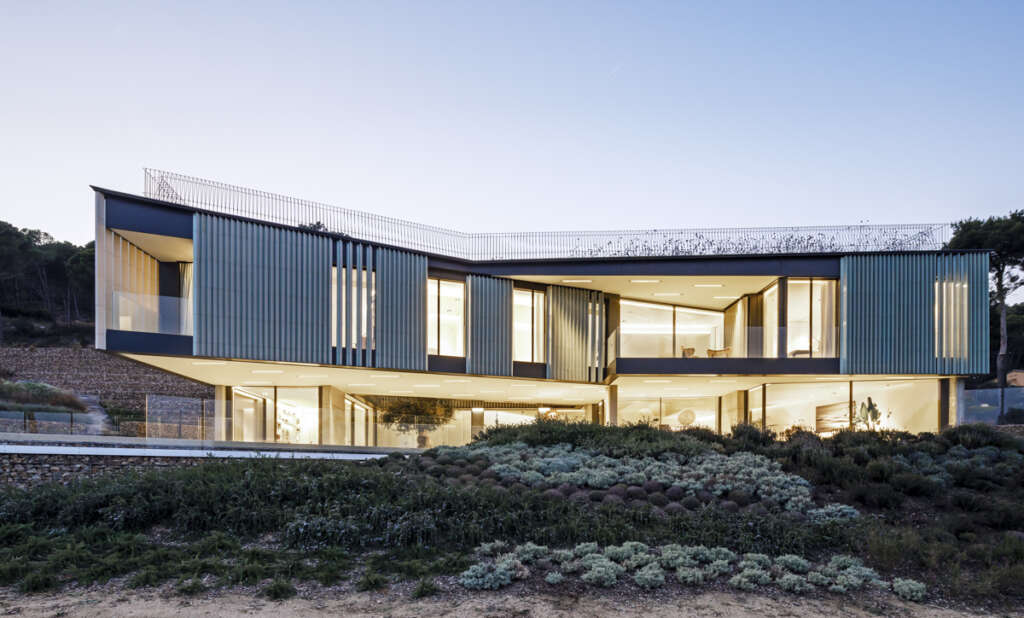
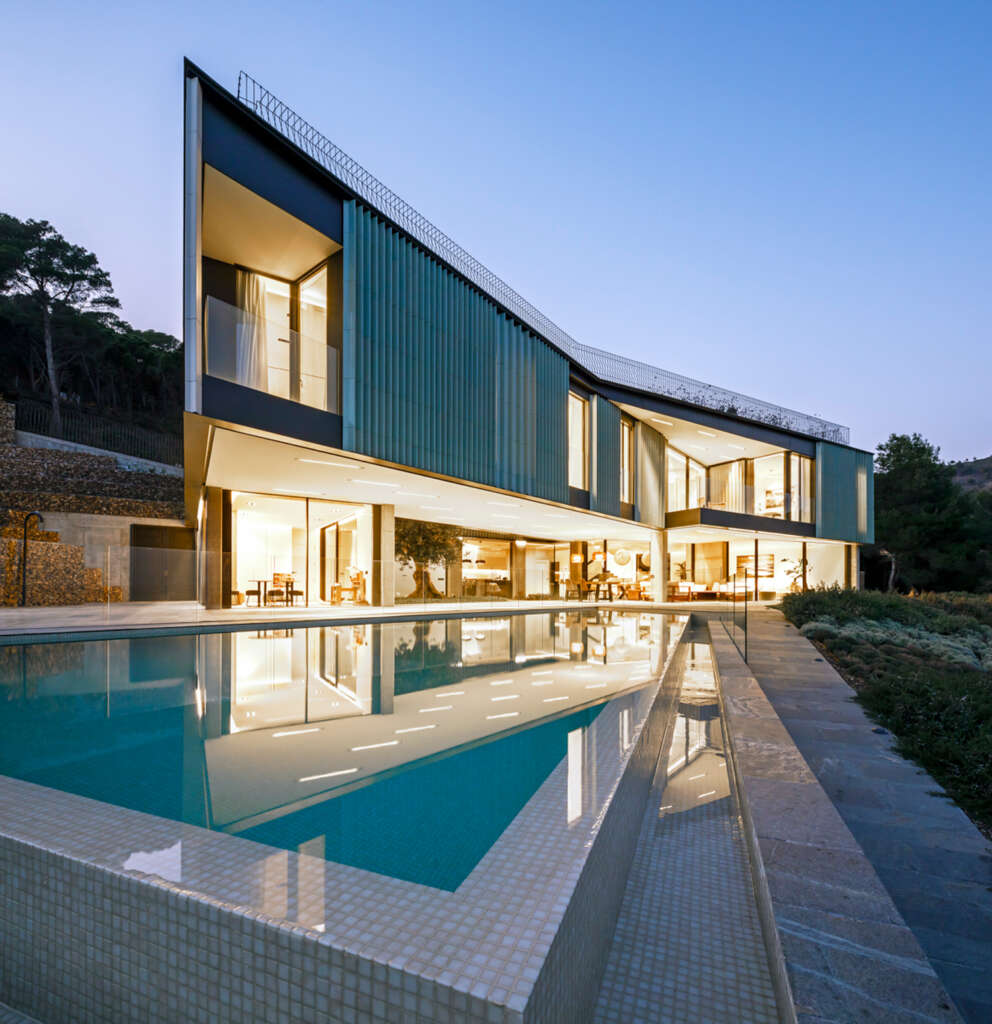
Project Details
- Built Surface area: 455m2
- Construction budget: 1.25 M Eur.
- Architecture, interior design, and landscape design: SALA FERUSIC Architects (Relja Ferusic Manusev y Carles Sala Roig)
- Structural engineering: MOST Enginyers (Dusko Hadzijanev y Antonio Lara)
- MEP engineering: Joan Josep Navarro
- Technical Architect: Josep Garriga Bona
- Interior Design: Cuca Arraut
- General contractor: Rubau Tarrés
- Ceramic façade: Ceràmica Cumella (Toni Cumella)
- Steel structure: Estructuras Quintana
- MEP: Simó Girona Industries
- Aluminium carpentry: Alurei
- Gabion walls: Muroxs
- Gardening: Vivers Ter, Drim Medi Ambient
- Photography: Marcela Grassi
- Video: Toposcan B30 (Xavier Blanco)




